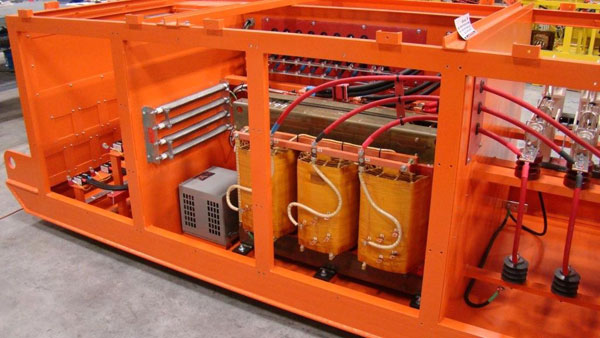Electrical Grounding and Bonding for Mining Applications
DAY ONE
SESSION 1: ELECTRICAL GROUNDING – SCOPE
- Definitions
- Applications
- Grounding methods
- Ground Faults
- Why Ground Circuits and Systems
- Grounding Systems
SESSION 2: CLASSIFICATION OF VARIOUS GROUNDING STANDARDS. CODES AND RULES
- CFR 30 Parts 55, 56 and 57, 12-25, 12-26, 12-27 and 12-28.
- In Parts 55, 56 and 57, section 12-25 requires frame grounding of all electrical equipment. Section 12-26 requires grounding of substation enclosures. Frame grounding of portable equipment is required by 12-27 and 12-28 requires testing of all the grounding components at a mine.
- U.S. Department of Labor Mine Safety and Health Administration
- U.S. Department of the Interior
- Pittsburgh Safety and Health Technology Center
- ANSI/IEEE
SESSION 3: ELECTRICAL GROUNDING ELECTRODE SYSTEM
- Grounding Theory
- Grounding Theory
- Parameters, Measurements and Calculations
- Types of ground
- Sationary equipment grounding importance of grounding the metallic portions of buildings.
- Wrong practice of grounding the equipment through local grounds or “peg gounds”.
- Installation and Protection
- Sizing the Grounding Electrode Conductor
- Portable equipment grounding
- Equiment powered through trailing cables
- Frame grounding or equivalent protection
- Noncurrent carrying metallic conductor
SESSION 4: SAFETY GROUNDING
- Sources of electrical power
- Grounded Conductor
- Direct-Current Systems
- Alternating-Current System
- Power systems at metal/nonmetal mines
- Solidly Grounding system
- Resistance Grounding
- MCC’s-Motors grounding
- Rigging Shore Power
- External source through shore power cables
- Performance grounding
SESSION 5: EQUIPMENT BONDING & GROUNDING
- Major Requirements:
- Identification of the Bonding Conductor
- Bonding/Grounding and electric Shock
- Equipment cabinets and hardware items
- Ground returns & machine grounding
- Frame grounding
SESSION 6: EMERGENCY POWER SYSTEMS
- Proper grounding of emergency power systems (generators)
- Three Pole emergency generator grounding
- Four Pole emergency generator grounding.
- Main Bonding Jumper
- Portable generators
- Vehicle Mounted Generators
DAY TWO
SESSION 7: GROUND CHECK MONITORS FOR UNDERGROUND POWER SYSTEMS
- The pilot wire to the equipment frame
- Phase to ground fault while the ground wire is broken.
- Basic approaches to monitoring
- Face equipment monitoring
- Problems associated with monitoring
- Intermachine Arcing
- Stray Currents
- Voltage Regulation
- Parallel Paths
- High Voltage Monitoring Systems
- Low Voltage Monitoring Systems
SESSION 8: GROUND RESISTANCE TESTING IN THE MINING INDUSTRY
- Substation with Substation Ground Bed and Three Parallel Ground Paths
- Measurement of earth resistance
- 62% Method
- Fall of Potential Method.
- Universal Ground Resistance Curve
- Guidelines to insure a safe testing procedure.
- Grounding Electrode accident
SESSION 9: LIGHTNING PROTECTION
- Electrical Grounding & Lightning
- Characteristics Protection Systems
- Electrogeometric & Rolling Sphere Concept
- NAVFAC Design Guides
- Ordnance Facilities Protection
- Storage and Handling Facilities Above Ground
- Earth-Covered Magazines
- Cranes on Piers and Wharves
- Marshalling Yards (Truck and Railroad)
- Explosives safety requirements
- Transient Overvoltage Protector Grounding
- Gas Tubes Metal Oxide Varistors Silicon Avalanche Diodes
SESSION 10: SAFE MEASUREMENT OF GROUND RESISTANCE
- Ground beds
- Ground bed resistance measurement
- Substation with Substation Ground Bed and Three Parallel Ground Paths
- Evaluation of specific instruments
- Three and four terminal instruments
- Clamp meter type
- Mine Safety Ground Bed
- Operation of Continuous
- Ground Bed Monitor
- Location of Ground Bed Monitor
- and Blocking Inductor
SESSION 11: CONSTRUCTION OF DRIVEN ROD GROUND BEDS
- Ground Bed design & construction
- Construction of a prototype ground bed
- Interconnection of rods
- Ground bed design tables
- Ground bed conducting fault current
- Ground bed conducting lightning stroke
- Soil Resistivity
- Soil Resistivity measurements
- Resistivity surveys for the Bureau of Mine ground Beds
- Soil resistivity measurement
- Wenner Method for soil resistivity measurement
- Arrangement for resistivity tables
- Interpretation of results
SESSION 12: SUBSTATION GROUNDING & BONDING FOR MINE POWER SYSTEMS
- Substation Ground Mat
- Grid design
- Surge arresters
- Grounding distribution system arresters
- Safety ground bed
- Wiring of ground system
- Grounding the borehole casing
- Ground check monitoring
- Ground bed corrosion
- CASE HISTORIES
Review of expectations
Questions and Answers
COURSE SCHEDULE:
Both days:
Start: 8:00 a.m.
Coffee break: 10:00 a.m.
Lunch: 12:00 noon
Finish: 4:30 p.m.
